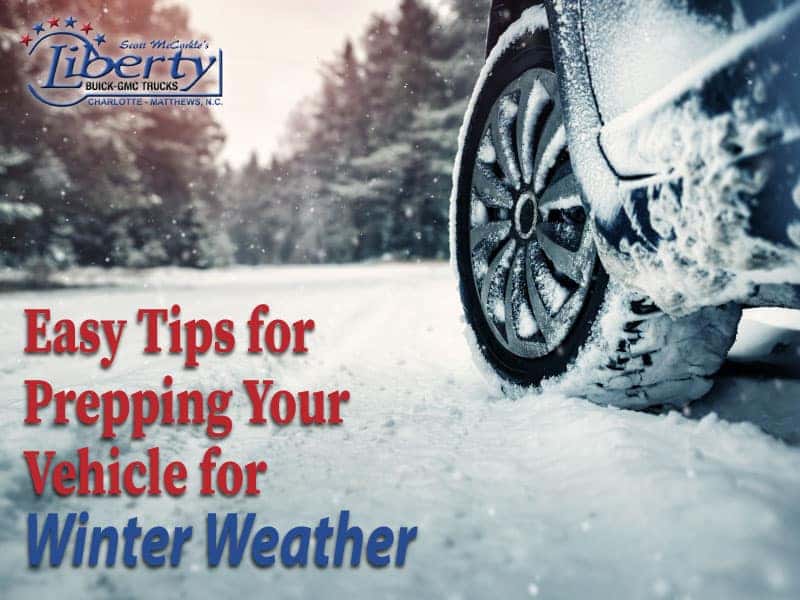
Coming up on the Thanksgiving holiday means more than preparing to down way too much food and see extended family for the first time in a year. In many areas, it’s also the perfect time to get your vehicle ready for winter weather. Not only do you want your vehicle to make it through the next few months unscathed, but you want to ensure that you and your family stay safe. Whether you’re dealing with snow, sleet, freezing rain, and/or blistering temperatures, here are some simple ways to prepare your vehicle (and yourself) for winter:
Having reliable tires is critical to your safety, particularly in winter weather. Once the temperature drops, it can cause your tire pressure to drop significantly. At least once a month, check the PSI in your tires and add air if necessary; typically, you can find the ideal PSI for your vehicle inside the driver's door jam.
Also, check the tread on your tires. Place a penny between the threads, and if you see Lincoln’s forehead, the tread is too low and you will need to replace your tires. Furthermore, if you live in an area that gets severe winter weather, such as in the northern United States, you might consider getting winter tires.
Check the Windshield and Wiper Blades
Another thing you want to do is to check your windshield for any cracks, which can quickly spread once the temperature drops. Even if you spot a small crack, get it looked at by an expert as soon as you can. While you’re at it, have new wiper blades installed so that you can ensure you’re ready to drive in the elements.
Inspect the Lights
When driving in snow, freezing rain, and other winter conditions, it’s essential to have functioning headlights and tail lights. If your headlights have issues, it can significantly hinder you from seeing what is in front of you, especially at night. And without your tail lights or brake lights working properly, it can quickly lead to accidents with other cars.
Cold weather is hard on batteries, and it tends to decrease their capacity. Be sure to get your vehicle's battery checked by a certified repair shop to ensure that it can hold a charge. Also, ask them to remove any corrosion from the connections and posts. Along with getting your battery serviced, keep a set of jumper cables in your vehicle as a backup plan.
Give Your Vehicle a Wax Coat
Road salt is essential to driver safety during winter weather. But due to its corrosive nature, it can be hard on your vehicle’s exterior over time. Adding a coat of wax can help prevent extensive damage to the exterior of your car. When applying wax, focus on the lower areas of your vehicle where salt, snow, and ice set in; this includes behind the front grille, wheels, and quarter panels.
Another thing to consider when prepping your vehicle for the cold months ahead is the engine oil you use. Generally speaking, the lower the viscosity, the better during winter. So, before the weather gets too frigid or harsh, consider switching to a thinner winter-grade oil; the viscosity of the oil you are using is identified by the first number of the oil specification. For example, 5W-30 oil is ideal for winter while 10W-30 is a little too thick.
Keep an Emergency Supplies Kit
Even if you thoroughly prepare your vehicle for winter weather, you can’t 100% guarantee that you won’t break down on the side of the road or get stuck in the snow or ice. That’s why it’s essential to arrange an emergency supplies kit that you keep in your car. This kit should include any items you think you might need in the event that you are stranded without a working vehicle. Here are some examples of items to consider:
- Extra winter clothes and outerwear
- Gloves and boots
- A blanket (preferably heated)
- A first-aid kit
- Non-perishable foods and jugs of water
- A portable charger for your smartphone
- Jumper cables
- A basic toolkit
- A tire gauge and tire chains
- A functional spare tire
- A wrench, jack, and any other equipment necessary for changing a tire
Conclusion
Getting your vehicle ready for the cold months ahead is one of the most important things you can do for ensuring the safety of you, your loved ones, and others on the road. Check your tires, windshield wipers and blades, and exterior lights. Consider putting a fresh coat of wax on your car and changing to lower-viscosity engine oil. And pack an emergency supplies kit. Lastly, remember that it’s always a good idea to take your vehicle to your local professional. Schedule your service appointment today!
